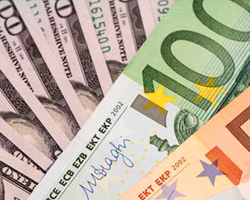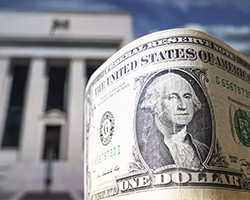What Affects the US Dollar Rate?
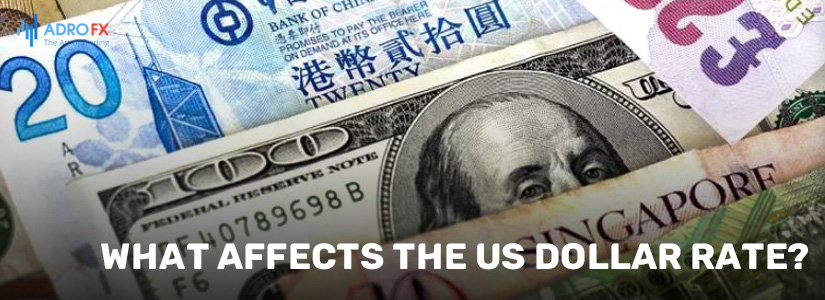
The US dollar is one of the most widely traded currencies in the world and plays a crucial role in international trade and finance. As a result, many factors can impact the value of the US dollar, including economic indicators, geopolitical events, and changes in monetary policy. Understanding the various factors that affect the US dollar rate is essential for investors, traders, and businesses who rely on the currency for their transactions. In this article, we will explore some of the key drivers that can impact the value of the US dollar and how they influence the broader financial markets.
How the US Dollar Exchange Rate is Determined
There are 4 options for calculating the exchange rate of any currency:
- Central Bank is in charge of this. For example, the Central Bank calculates the dollar, euro, and other currencies, taking into account trading on the exchange market. This is more of a formal indicator, according to which the dollar can not be bought/sold, neither by the population nor by businesses of any size. The rate is not constantly updated as in the case of the currency market;
- Banks are engaged in the sale and purchase of dollars from the public, so they calculate the value of the US national currency themselves when selling and buying currency from citizens. The spread between these prices is the bank's earnings; the risks of a sharp devaluation of the national currency are also built into this spread. In periods of instability, the difference between the prices of buying and selling dollars grows, making it unprofitable to buy foreign currency;
- Interbank rate - relevant when banks buy currency from each other. Ordinary buyers of currency will not be able to use it;
- Exchange rate - the dollar exchange rate against the ruble and other currencies is constantly updated and depends on the balance of supply and demand. It is called a "fair" rate, as the dollar value depends on traders themselves, rather than on the financial regulator or banks.
These rates differ, but in calm situations (when there are no geopolitical risks) the difference between them is small.
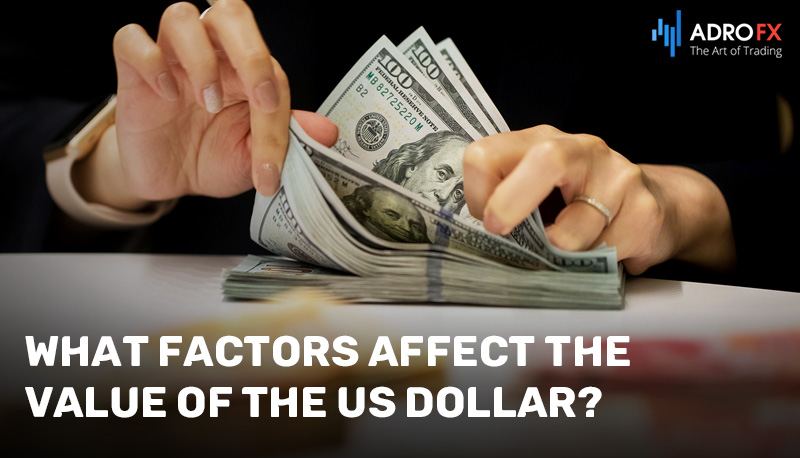
What factors affect the value of the US dollar?
All events affecting the dollar can be divided into two categories - internal and external. Internal events include macroeconomic statistics and changes in monetary policy.
Internal Factors
This group of factors includes:
- Dynamics of GDP change. If real growth outpaces forecasted growth, the dollar gets support;
- The unemployment situation. The main indicators are nonfarm payrolls and statistics on number of jobless claims. The NFP report shows how many nonfarm payrolls jobs are created and is released on the first Friday of every new month. In simple terms, the lower the unemployment rate, the stronger the US national currency;
- CPI (Consumer Price Index) shows how the average price of a certain set of goods/services has changed. It is considered an indicator of inflation in the country, a decrease in the index indicates problems in achieving the inflation target set by the regulator and makes it difficult for the dollar to grow;
- Interest rate (Federal funds rate). In terms of how the key rate affects the dollar, when it increases, the currency becomes more attractive to investors, and it becomes more expensive, but business activity and inflation decrease;
- PPI (Industrial Price Index). The calculation principle is similar to CPI, but services are not taken into account, and the index itself is calculated taking into account the cost of labor, raw materials, and intermediate goods. It is also an indicator of inflation;
- The ratio of imports to exports (trade balance). The more a country exports, the more developed domestic production is, which benefits the economy;
- Housing sales on primary and secondary markets. This indicator is an indicator of the well-being of Americans and the economy as a whole. Its growth supports the dollar;
- Durable Goods Orders (by "durable goods" we mean goods with an estimated useful life of 3 years and more). The growth of this indicator stimulates the development of the manufacturing sector, companies attract investors, including foreign investors, and their shares rise;
- Indices of activity in the service sector and in the production sphere;
- Publication of protocols.
The above news affecting the dollar can be tracked via the economic calendar. The calendar shows the previous, expected, and real value of the indicator and explains each news item.
News is also filtered by the country:
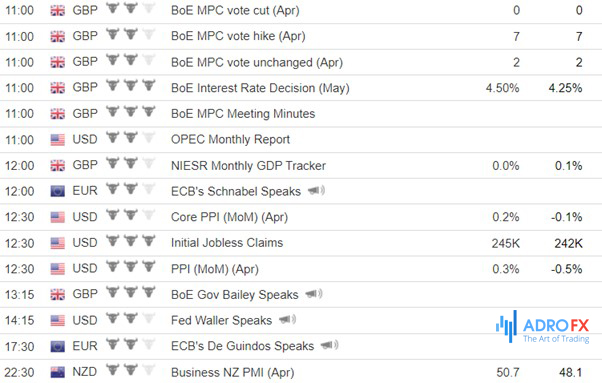
Also, the rate depends on the treasury bond yield. Thus, when the rate on 10-year bonds grows, theoretically, the dollar should grow, and when yield decreases - it should fall, but this dependence is not always observed.
For example, in March 2020, there was a more than 3-fold drop in 10-year Treasury bond yields. But there was no corresponding drop in the dollar, the US national currency was perceived as a safe haven asset at the beginning of the pandemic and the decline in bond yields was not taken into account.
The analysis of the dollar quotes takes into account the ratio of the US and other countries' bond yields.
For example, if the gap between the US and German bonds widens, the dollar will strengthen against the euro if other fundamentals remain neutral.
If the gap decreases, the dollar loses ground against the euro.
The next significant factor is the statements of top government officials and major officials. For example, Trump's tweets that he thought the dollar was overvalued and his rebuke of the Fed have repeatedly affected the exchange rate of the US national currency. The same was true of comments on China and monetary policy in general. In addition to comments made by the presidents, the US dollar exchange rate is also affected by the comments made by the head of the Federal Reserve System and his assessment of the economy in general.
Force majeure factors may also have an impact. These include natural disasters, and terrorist attacks, which besides financial damage also cause reputational damage.
External Factors
This group of influencing factors includes:
- The cost of oil. The United States is one of the largest consumers of "black gold" and is also one of the leaders in oil production. As for why oil affects the dollar exchange rate, it is due to high consumption and production.
There is a non-linear dependence on the question of how oil affects the dollar exchange rate; the dollar does not fall after the "black gold" price collapse. Its falling value jeopardizes the prospect of shale production, there is a risk of bankruptcy of the mass of small companies, which poses a threat to the dollar. At the same time, low oil prices reduce the cost of fuel at gas stations. - The value of gold, with the amount of yellow metal mined in the US not affecting the dollar. The correlation occurs because gold is perceived as a safe haven in case of planetary shocks. When investors are not sure about the development of the global economy, they start investing in gold.
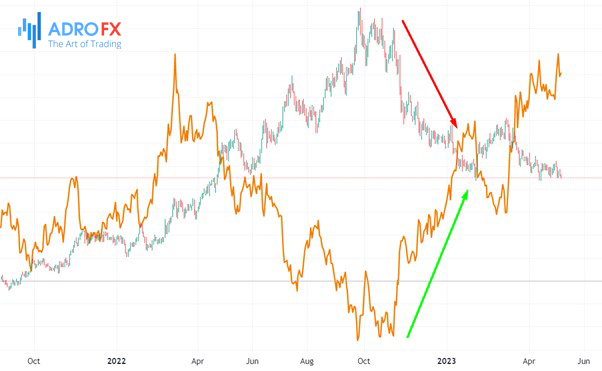
- Geopolitics, in particular relations with major trading partners. Thus, the United States' desire to renegotiate trade relations with China unleashed a trade war, with both the dollar and the yuan suffering as a result.
- The exclusion of the dollar from payments for goods and services between countries. For now, the US national currency remains the world's main reserve currency, but if the current state of affairs changes, the value of the dollar will fall.
- Direct United States involvement in military conflicts. This partly has a positive impact on the economy - the military-industrial complex gets a powerful incentive for development, and orders for military products from the countries involved in the conflict are growing. But direct participation in wars also increases military expenditures.
- Natural and man-made disasters outside the United States, especially among major trading partners, in countries where the main production of US companies is located.
The US influence on the listed external factors is limited.
US Dollar Currency Index
This index is used to assess the "strength" of the US currency. Calculated by taking into account the exchange rate of the dollar against six currencies, it is used on the stock exchange to assess the state of the currency and to confirm medium- and long-term trends.
The index was developed by JPMorgan Chase & Co. and has been calculated since 1973; the basic index value is 100 points. Unlike stock indices, there is no permanent rebalancing. The only time the basket was rebalanced was after the launch of the euro.
The value of the index is pegged to a base of 100 points, it does not grow over the distance as is the case with the S&P 500 and other indices. A Dollar Index value of 105 points, for example, means that the dollar is up 5% since the start date.
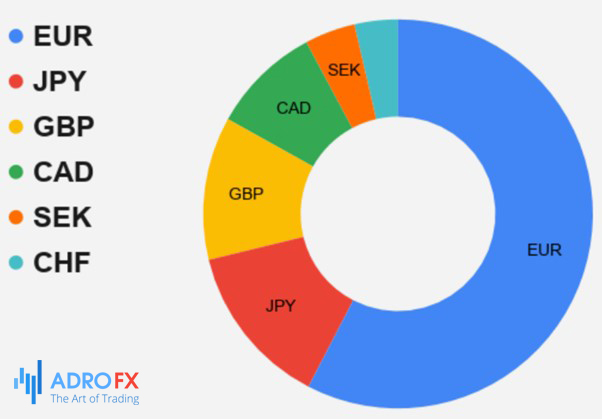
The following currencies are included in the basket:
- EUR - 57.6%;
- JPY - 13.6%;
- GBP - 11.9%;
- CAD - 9.1%;
- SEK - 4.2%;
- CHF - 3.6%.
Formally, the index has 6 currencies, but due to the fact that the basket includes the euro, Dollar Index takes into account the currencies of 24 countries. Still, the methodology has been criticized for being too dependent on the European Union currencies.

The Dollar Index does not show what the dollar rate in a country depends on; its purpose is to assess the state of the US currency, so as not to work against the main trend. If Dollar Index shows steady growth, it is advisable to limit your trading to long positions, as counter-trend trading is more risky.
Dollar Index is also used for trading. It is the calculation basis for some ETF funds that offer profits when the U.S. dollar goes up or down:
- Invesco DB US Dollar Index Bearish Fund (UDN) is a bearish ETF that makes profits when the index declines. There is a leveraged version of the same ETF, but with x3 leverage, on the same movement the Dollar Index yields three times the gain or loss compared to the UDN;
- Invesco DB US Dollar Index Bullish Fund (UUP), gives a profit when the dollar strengthens. As in the previous case, the ETF provider has launched an x3 leveraged version of the fund.
Because of the high share of the euro in the basket, the index is highly dependent on the situation in the EU. The giants of the world economy such as China are not taken into account in its calculation.
Conclusion
Dozens of indicators are taken into account when it comes to understanding what the value of the dollar depends on. The US currency value is influenced by the state of the US economy, its foreign/domestic policy, and the state of the world economy as a whole.
When analyzing the prospects of the dollar all of these factors are taken into account in complex. You cannot, for example, focus only on the economy inside the United States and not take into account relations with trading partners and the promotion of American interests in the world.
About AdroFx
Established in 2018, AdroFx is known for its high technology and its ability to deliver high-quality brokerage services in more than 200 countries around the world. AdroFx makes every effort to keep its customers satisfied and to meet all the trading needs of any trader. With the five types of trading accounts, we have all it takes to fit any traders` needs and styles. The company provides access to 115+ trading instruments, including currencies, metals, stocks, and cryptocurrencies, which make it possible to make the most out of trading on the financial markets. Considering all the above, AdroFx is the perfect variant for anyone who doesn't settle for less than the best.


